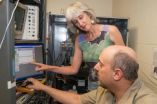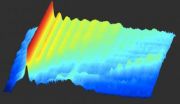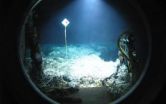(Press-News.org) "Pants on fire" isn't the only problem liars face. New research from the University of Notre Dame shows that when people managed to reduce their lies in given weeks across a 10-week study, they reported significantly improved physical and mental health in those same weeks.
Funded by a grant from the John Templeton Foundation, the "Science of Honesty" study was presented recently at the American Psychological Association's 120th annual convention.
"We found that the participants could purposefully and dramatically reduce their everyday lies, and that in turn was associated with significantly improved health," says lead author Anita Kelly, a Notre Dame psychology professor whose research includes the study of secrets and self-disclosure.
Kelly and co-author Lijuan Wang, also of Notre Dame, conducted the honesty experiment over 10 weeks with a sample of 110 people, 35 percent of whom were adults and 65 percent of whom were college students. They ranged in age from 18 to 71 years, with an average age of 31.
Approximately half the participants were instructed to stop telling both major and minor lies for the duration of the 10-week study. The other half served as a control group that received no special instructions about lying. Both groups came to the laboratory weekly to complete health and relationship measures and to take a polygraph test assessing the number of major and white lies they had told during that week. According to Kelly, Americans average about 11 lies per week.
Over the course of 10 weeks, the link between less lying and better health was significantly stronger for participants in the no-lie group, the study found. For example, when participants in the no-lie group told three fewer white lies than they did in other weeks, they experienced on average about four fewer mental-health complaints, such as feeling tense or melancholy, and about three fewer physical complaints, such as sore throats and headaches, the researchers found.
In contrast, when control group members told three fewer white lies, they experienced two fewer mental-health complaints and about one less physical complaint. The pattern was similar for major lies, Kelly said.
Compared to the control group, participants in the more truthful group told significantly fewer lies across the 10-week study, and by the fifth week, they saw themselves as more honest, Kelly said. When participants across both groups lied less in a given week, they reported their physical health and mental health to be significantly better that week.
The study also revealed positive results in participants' personal relationships, with those in the no-lie group reporting improved relationship and social interactions overall going more smoothly when they told no lies.
"Statistical analyses showed that this improvement in relationships significantly accounted for the improvement in health that was associated with less lying," said Wang, who is a statistician.
Is it difficult to keep from lying in day-to-day interaction?
Participants said they realized they could simply tell the truth about their daily accomplishments rather than exaggerate, while others said they stopped making false excuses for being late or failing to complete tasks, Kelly said. Others said they learned to avoid lying by responding to a troubling question with another question to distract the person, she said.
INFORMATION:
END
Two NASA satellites have captured data on the activity of Typhoon Haikui as it nears the China coast. NASA's Terra satellite provided a visible look at the storm, while NASA's Aqua satellite investigated it in infrared light. Both showed some strong thunderstorms within that were likely packing heavy rainfall.
NASA's Aqua satellite passed over Typhoon Haikui on August 5. The AIRS instrument captured an infrared image of the cloud temperatures that showed the strongest storms and heaviest rainfall in all quadrants of the storm except the northern area. The strongest storms ...
ZURICH – Computer graphic artists often struggle to render smoke and dust in a way that makes a scene look realistic, but researchers at Disney Research, Zürich, Karlsruhe Technical Institute in Germany, and the University of Montreal in Canada have developed a new and efficient way to simulate how light is absorbed and scattered in such scenes.
"Our technique could be used to simulate anything from vast cloudscapes, to everyday 'solid' objects such as a glass of orange juice, a piece of fruit or virtually any organic substance," said Dr. Wojciech Jarosz of Disney Research ...
Leslie Henderson is concerned about steroid abuse, not necessarily by sports luminaries like Barry Bonds and Mark McGwire, but rather by adolescents.
"There is this disconnect among young people that somehow your emotions, your thought processes—things that have to do with your brain—are separate and different from what steroids may be doing to your body—your muscles, your heart, or your liver, or anything like that," says Henderson, a professor of physiology and neurobiology, and of biochemistry at the Geisel School of Medicine at Dartmouth. She is also the senior associate ...
MAYWOOD, Il. -- When a patient undergoes a cardiac catheterization procedure such as a balloon angioplasty, there's a slight risk of a stroke or other neurological complication.
While the risk is extremely small, neurologists nevertheless may expect to see catheterization-induced complications because so many procedures are performed, Loyola neurologists write in the journal MedLink Neurology.
Cardiac catheterizations include diagnostic angiograms, balloon angioplasties and stent placements. More than 1.4 million procedures are successfully performed each year. Cardiac ...
Childhood obesity is on the rise in China, and children and parents there tend to underestimate body weight, according to Penn State health policy researchers.
"Because many overweight Chinese children underestimate their weight, they are less likely to do anything to improve their diet or exercise patterns," said Nengliang Yao, graduate student in health policy and administration. "If they don't make changes, they are likely to be obese and have a lot of health problems in the future -- as we often see in the United States already."
Children between the ages of 6 and ...
A new study conducted by researchers at the Center for Injury Research and Policy of The Research Institute at Nationwide Children's Hospital and The Ohio State University compared medically attended noncccupational and occupational injuries among U.S. workers with and without disabilities.
The study, appearing online in the American Journal of Public Health, found that workers with disabilities are significantly more likely to experience both nonoccupational and occupational injuries than those without disabilities. Rates of nonoccupational and occupational injuries ...
BOSTON – Healthcare providers should take into account differences among racial groups when using hemoglobin A1C levels to diagnose and monitor diabetes, new research from Beth Israel Deaconess Medical Center suggests.
In a study published Aug. 7 in the Annals of Internal Medicine, researchers analyzed National Health and Nutrition Survey data from 2005 to 2008 to examine the association between hemoglobin A1C levels in black and white adults and the risk for retinopathy, an eye complication of diabetes that is detectable early in the disease and can ultimately lead to ...
The first controlled studies of extremely hot, dense matter have overthrown the widely accepted 50-year old model used to explain how ions influence each other's behavior in a dense plasma. The results should benefit a wide range of fields, from research aimed at tapping nuclear fusion as an energy source to understanding the inner workings of stars.
The study also demonstrates the unique capabilities of the Linac Coherent Light Source (LCLS) X-ray laser at the U.S. Department of Energy (DOE)'s SLAC National Accelerator Laboratory. While researchers have created extremely ...
Scientists have discovered a biological marker that may help to identify which depressed patients will respond to an experimental, rapid-acting antidepressant. The brain signal, detectable by noninvasive imaging, also holds clues to the agent's underlying mechanism, which are vital for drug development, say National Institutes of Health researchers.
The signal is among the latest of several such markers, including factors detectable in blood, genetic markers, and a sleep-specific brain wave, recently uncovered by the NIH team and grantee collaborators. They illuminate ...
By some estimates, a third of Earth's organisms live in our planet's rocks and sediments, yet their lives are almost a complete mystery.
This week, the work of microbiologist James Holden of the University of Massachusetts-Amherst and colleagues shines a light into this dark world.
In the journal Proceedings of the National Academy of Sciences (PNAS), they report the first detailed data on methane-exhaling microbes that live deep in the cracks of hot undersea volcanoes.
"Evidence has built that there's an incredible amount of biomass in the Earth's subsurface, in ...




